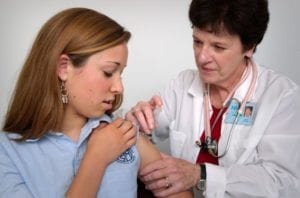FDA Initiative Focuses on Female Representation in Clinical Trials
The Food and Drug Administration has identified an information gap in its system of clinical trials and is working to fill it.
The gap relates to women. There aren’t enough of them enrolled.
 “Underrepresentation of women (or minority or ethnic groups) results in a lack of information for these patients and their physicians regarding risks and benefits of some medical products,” wrote Dr. David Strauss, of the FDA’s Center for Devices and Radiological Health, on the FDAVoice blog. “Certain differences between women and men – including anatomy and physiology – can lead to medical devices performing better or worse.”
“Underrepresentation of women (or minority or ethnic groups) results in a lack of information for these patients and their physicians regarding risks and benefits of some medical products,” wrote Dr. David Strauss, of the FDA’s Center for Devices and Radiological Health, on the FDAVoice blog. “Certain differences between women and men – including anatomy and physiology – can lead to medical devices performing better or worse.”
The system of clinical trials and the results obtained from them form a foundation on which the FDA relies for the approval – or denial – of devices, drugs and other products in development. One such product is a heart implant called cardiac resynchronization therapy, a pacemaker that, if defective or detrimental, could result in loss of life.
The pacemaker targets patients experiencing heart failure. When tested in a clinical trial for such patients, less than one-quarter of them were women.
With help from the FDA’s Office of Women’s Health, officials effectively increased the number of female participants and collected better quality and more well-rounded data on the product.
“We found that women benefit from CRT significantly more than men do,” Strauss wrote. “Patients of both sexes with a left bundle branch block (LBBB), an electrical conduction disorder in the heart, benefited most. However, women did so at a shorter QRS duration (time to complete electrical activation of the heart) than men.”
The analysis also found a 76-percent reduction in heart failure in LBBB women with the implant and no significant reduction in similar LBBB men.
The Journal of American Medical Association published an abstract of the findings on its website, as the study marked the FDA’s first analysis of medical devices from multiple companies based on patient-by-patient data.
In an effort to ascertain additional data about CRT – as well as new data on other medical devices – in women, the FDA is taking a twofold approach:
The Center for Devices and Radiological Health is finalizing a guidance document that offers a protocol for analyzing and communicating data specific to women during clinical trials involving medical devices.
The FDA will release an action plan for improving the collection, analysis and dissemination of data on women and other populations identified by age and ethnicity during clinical trials of products seeking approval.
Armed with this guidance document and an action plan, the FDA will create clear and concise summaries of all products within the FDA’s realm. This will hopefully result in more accurate labeling and a better understanding of consumer safety.
Dr. David Strauss concluded his blog on FDAVoice by stating that “…combining individual-patient data from multiple clinical trials is an additional research tool that can help answer questions about patient groups underrepresented in clinical trials – and help us strengthen the foundation for all medical devices on the market.” We hope he’s right.
Share This


